After Yatani gorge, we headed to Nichirin-ji(日輪寺, Nichirin-ji temple).
It was established in 平安時代(Heian period, 794-1185) as a temple of 天台宗(Tendai-shu) which is one of the sect of Buddhism and in 鎌倉時代(Kamakura period, 1185-1333), it was converted to 曹洞宗(Soutou-shu) which is one of the sect of 禅(Zen).
Since Nichirin-ji has a long history, it has many historical properties there.

Photo credit : Chieko @untappedkumamoto
In spring, many people visit there to admire beautiful flowers, starting with sakura(cherry blossoms) from the end of March to the beginning of April and tsutsuji(azaleas) after that.
When we arrived there, there was no one but us and again, we felt that it was just for us.
It’s a reward for us to get up early and start traveling.
It was serene and peaceful.
First, we saw this beautiful wooden gate,鐘楼門(Shourou-mon).
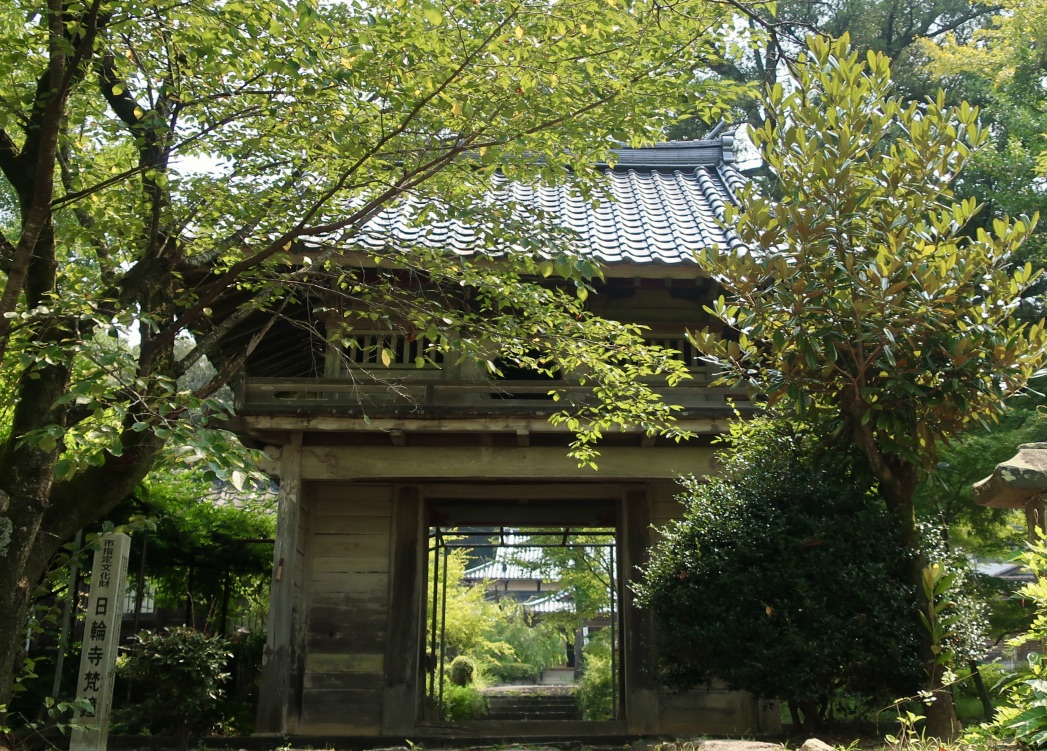
Photo credit : Chieko @untappedkumamoto
I knew it later(I should’ve checked in advance!) but we could climb the ladder of Shourou-mon and on the second floor, we could see the temple bell which was made in 室町時代(Muromachi period, 1336-1590) which is 115cm high and diameter is 79cm.
This is a designated cultural property of Yamaga.
As we walked into, we found the main hall.
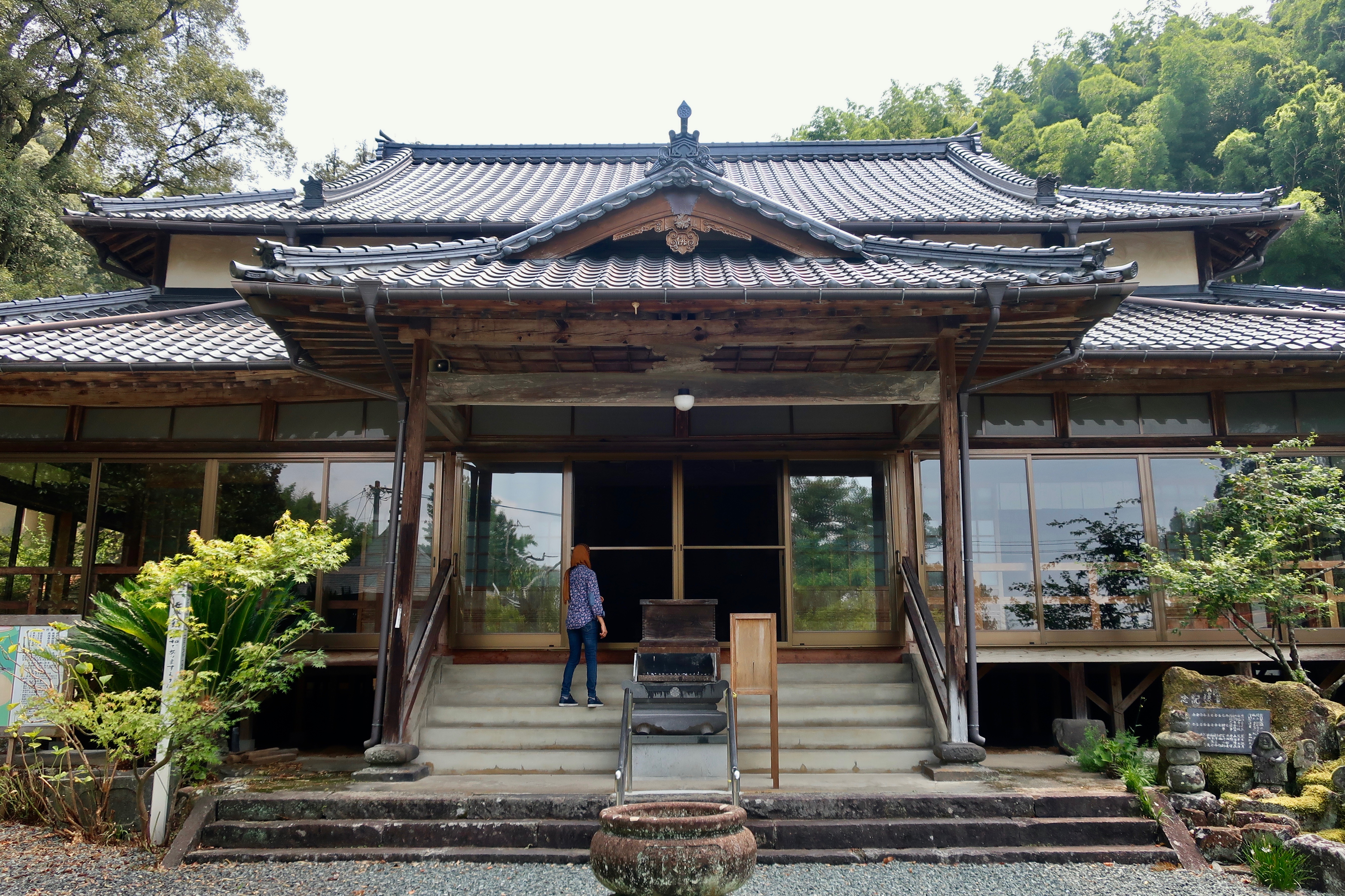
Photo credit : Chieko @untappedkumamoto

Photo credit : Chieko @untappedkumamoto
Next to it, we saw 心字池(Shinji-ike) which is a pond shaped like a heart❤︎ and a lot of koi were swimming and gathering toward us just like they wanted to be fed.

Photo credit : Chieko @untappedkumamoto
The view from there was beautiful, which is a combination of the pond, bridge and temple in greenery.

Photo credit : Chieko @untappedkumamoto
While we were walking, we found these lanterns along the approach and suddenly my friend noticed something and was astonished by the sight.

Photo credit : Chieko @untappedkumamoto
Can you get the glimpse of the statue?

Photo credit : Chieko @untappedkumamoto
We bursted into laughter, not because it was funny but it was much more bigger than we expected!
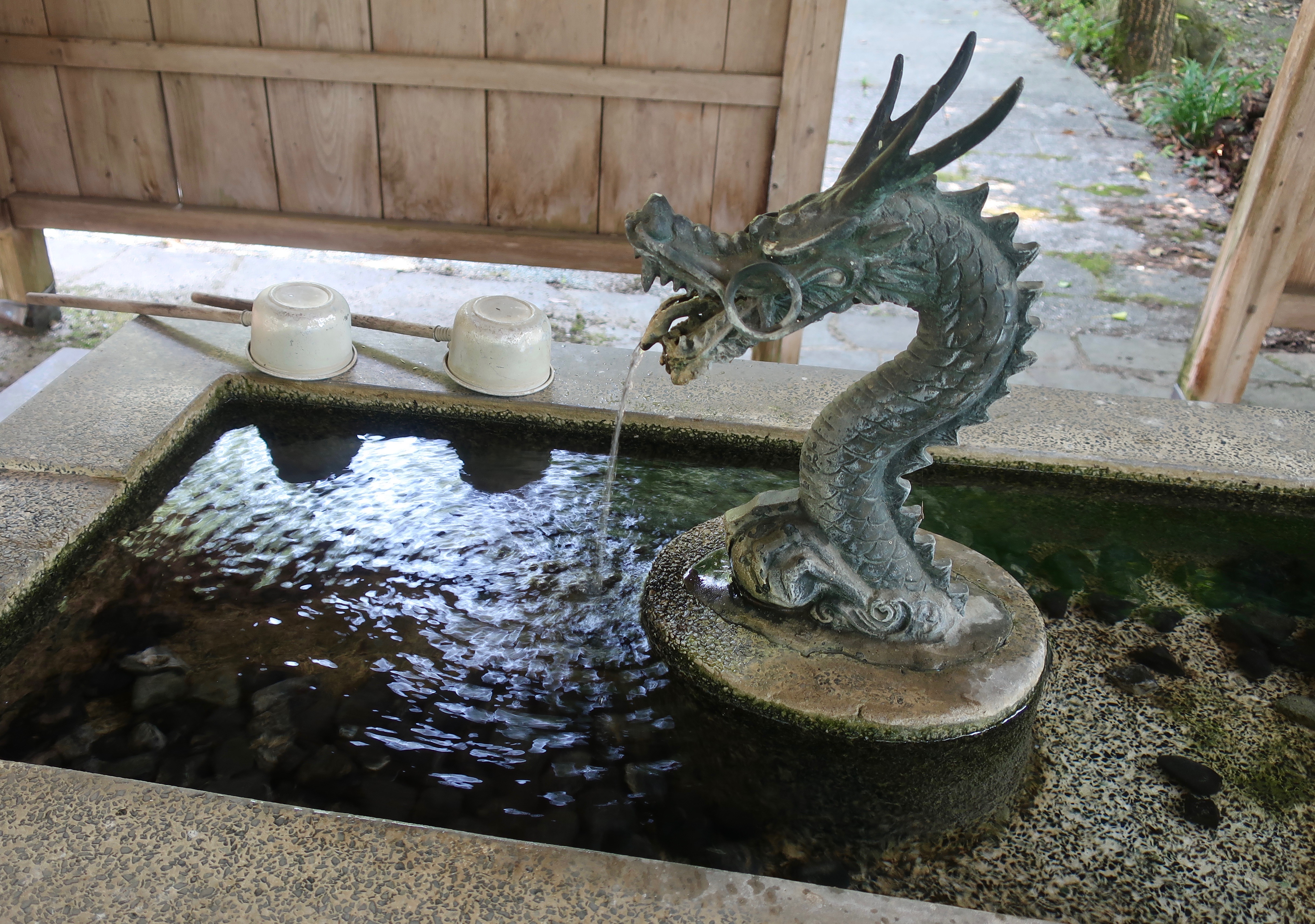
Photo credit : Chieko @untappedkumamoto
We washed our hands first and walked towards the statue.

Photo credit : Chieko @untappedkumamoto

Photo credit : Chieko @untappedkumamoto
The name of the statue is ‘おびんずるさま(Obinzuru-sama)’ who is one of the disciple of 釈迦如来(Shakaryorai, means Gautama Buddha).
It was erected in 1988 and made of glass fiber.
The hight is 30m and width is 10m.
The width of the head is 6m and the hand is 3m.
He is holding 宝珠(Houju, means prayer breads) that is 22m in length.
It is standing leaned backward because it’s believed that he is accepting our worries and suffers instead of us.

Photo credit : Chieko @untappedkumamoto
The statue was standing peacefully and it made us relieved and relaxed.
After praying, we started to walk again and found out the gate and 33 観音(Kannon, means the Goddess of Mercy).
It had a solemn and sacred atmosphere.

Photo credit : Chieko @untappedkumamoto
This is the statue of 大石内蔵助(Ooishi Kuranosuke) who was one of the 赤穂浪士(Akou-roushi) who was a samurai and used to serve to the domain of Akou(around Hyogo-prefecture now).
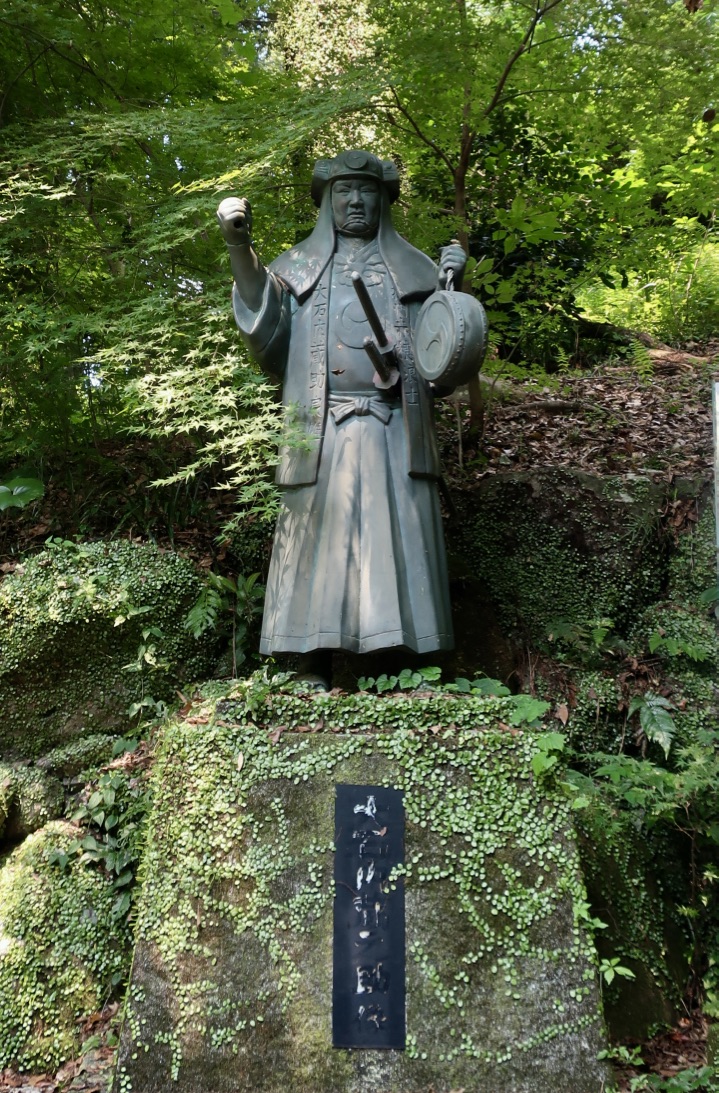
Photo credit : Chieko @untappedkumamoto
(※By the way, the difference between 武士(bushi) and 浪士(roushi) is whether they have a feudal lord to serve. If they have, they are called bushi and if not(like their lord was killed or their caste was taken, etc.), they are called roushi.)
He’s well-known for ‘ 赤穂事件(Akou jiken) which is a famous historical incident and is often called ‘忠臣蔵(Chushingura)’.
This incident have been adapted into 歌舞伎(Kabuki, traditional play), dramas, movies and even tv games so if you’re interested in it, please check it.
in 江戸時代(Edo period,1603-1868), if a fight happened, both of them should have been accused which is called 喧嘩両成敗(Kenka ryouseibai, means ‘It takes two to tango.’).
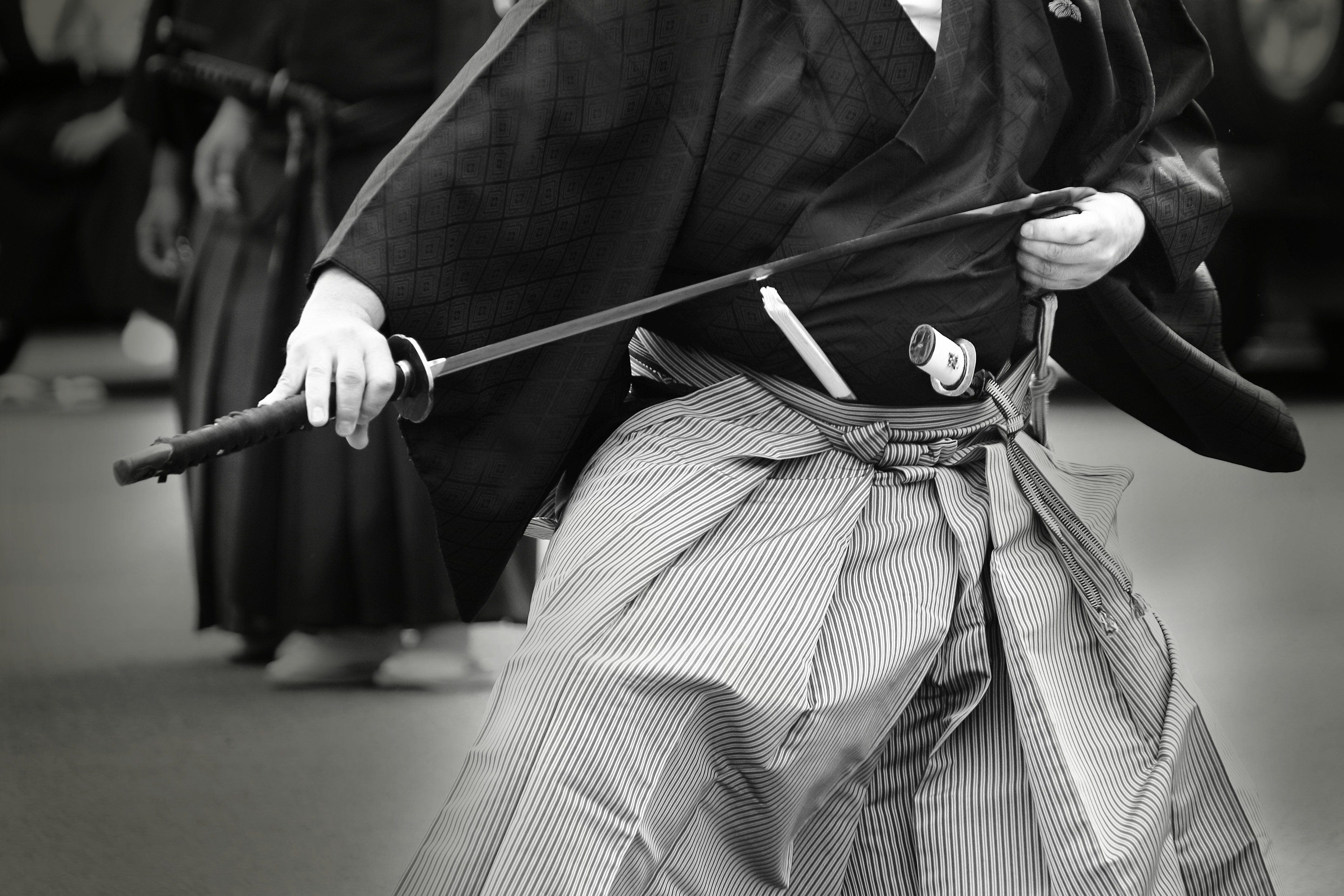
source : https://www.photo-ac.com
In 1701, during the important ceremony was being held at Edo castle, 浅野内匠頭(Asano Takuminokami) who was the feudal lord of Akou and 吉良上野介(Kira Kouzukenosuke) who had a high position in Edo shogunate had a fight.
Both of them were supposed to be punished because of the idea of Kenka ryouseibai but unfairly, only Asano Takuminokami was sentenced to death by 切腹(Seppuku, means to commit suicide by cut one’s belly by themselves) .
Akou-roushi lost their lord and castle and decided to take revenge on Kira Kouzukenosuke because they saw it as unfair.
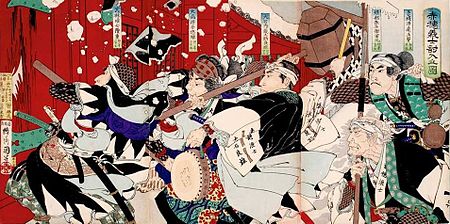
source : https://ja.wikipedia.org/wiki/赤穂事件#「義士」論争
After achieving their revenge, the government sent Akou-roushi to several houses to keep an eye on them until the sentence was judged.
The house of Hosokawa which is the domain of Kumamoto at that time was one of them.
In some houses, people treated Akou-roushi unrespectfully but the lord of Hosokawa welcomed them and treated them well, because he had doubt against the government so praised them to achieve their revenge and fight for their justice.
After a while, Akou-roushi were sentenced to death by Seppku and after being executed it, 堀内伝右衛門(Horiuchi Denemon) who was in charge of taking care of them asked for their hair to commemorate them.
Now in Nichirin-ji, there is 遺髪塔(Ihatsu-tou) where their hair is buried and worshiped.
Every year on February 4th, there is a festival called ‘義士祭り(Gishi festival, Gishi means samurai who fought for their justice)’ to praise Akou-roushi and send prayer to them. Nichirin-ji offers us soba and Amazake(traditional sweet drink, low- or non-alcohol).
I’d say that Nichirinji is a great place for people who want to relax and also people who are interested in Japanese history.
To be honest, I didn’t know about Akou incident well before but now I’m getting interested in it and want to know more of it.
Visit Nichirin-ji and be immersed in people who involved in it.
You’ll get a glimpse of how much efforts people in the past paid hoping the brighter future.

Photo credit : Chieko @untappedkumamoto
【Information and links】
日輪寺(Nichirin-ji temple)
Address : 1607, Sugi, Yamaga-city, Kumamoto-prefecture
(熊本県山鹿市杉1607)
Tel : 0968-43-5802
Official website :

















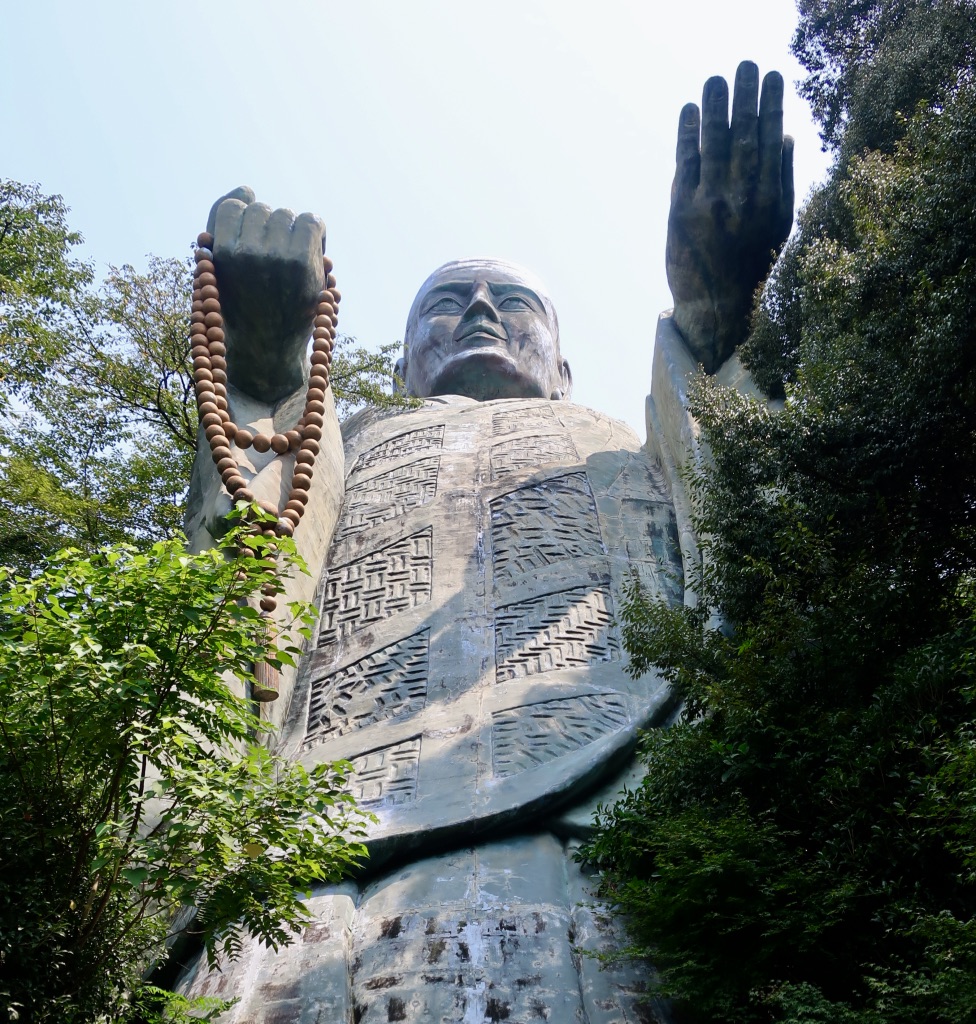
1 ピンバック